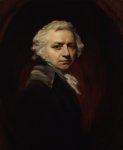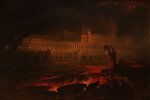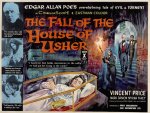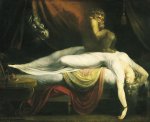John Henry Fuseli - or Füssli- (1741-1825) was a British romantic painter and writer, born in Switzerland. His universe is remarkable for its gothic inspiration, and abounds with all manners of supernatural creatures, and demons. He also found inspiration in the works of Shakespeare, and in Milton’s Paradise Lost.
He is considered as one of the most important English artists of the romantic movement, along with William Blake ( an English poet and painter ), who was his friend.
His fascination with horrifying or fantastic subjects is obvious in two of his most famous works, The Nightmare and Lady Mcbeth walking in her sleep .
He influenced Mary Shelley for her famous novel Frankenstein, and Edgar Allan Poe for his short story The fall of the house of Usher.
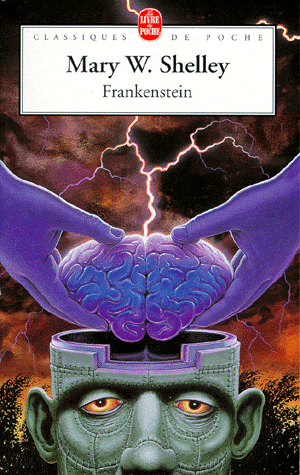
- Frankenstein’s book cover
Unlike the other Romantic artists, he painted only two portraits. He didn’t have an academic painting experience, and his very personal style is characterized by exaggeration and a sense of dramatization. His works have been a source of inspiration for artists all around the world.
The Nightmare
The Nightmare by Henry Fuseli was painted in 1781. It’s an oil on canvas. It represents a sleeping woman who looks almost like a corpse ; an incubus [1] is sitting on her chest, and a horse’s head with bulging flaming eyes seems to burst into the bed canopy. The white nightdress draping the woman’s pale body contrastswith the darker reds, yellows ans ochres of the background : it’s the chiaroscuro effect.
Why Nightmare ?
- The early meaning of "nightmare" refers to the sleeper’s experience of a weight on the chest.
- "Mare" is derived from a scandinavian word designating a ghost, a spirit sent to torment sleepers.
- "Mare", in english, is the female horse which can be seen in the painting.
This painting, is laden with symbolic sexual content. Indeed, this scene contains allusions to folk beliefs about demons and witches who visited men and women who had sexual intercourse with the devil.
We can add, that a few years before he painted The Nightmare, Fuseli had fallen in love with Anna Landholdt, but she married another man. So The Nightmare can be seen as a representation of this lost love : the incubus is the painter, the sleeping woman is Anna Landholt.
Lady Macbeth walking in her sleep
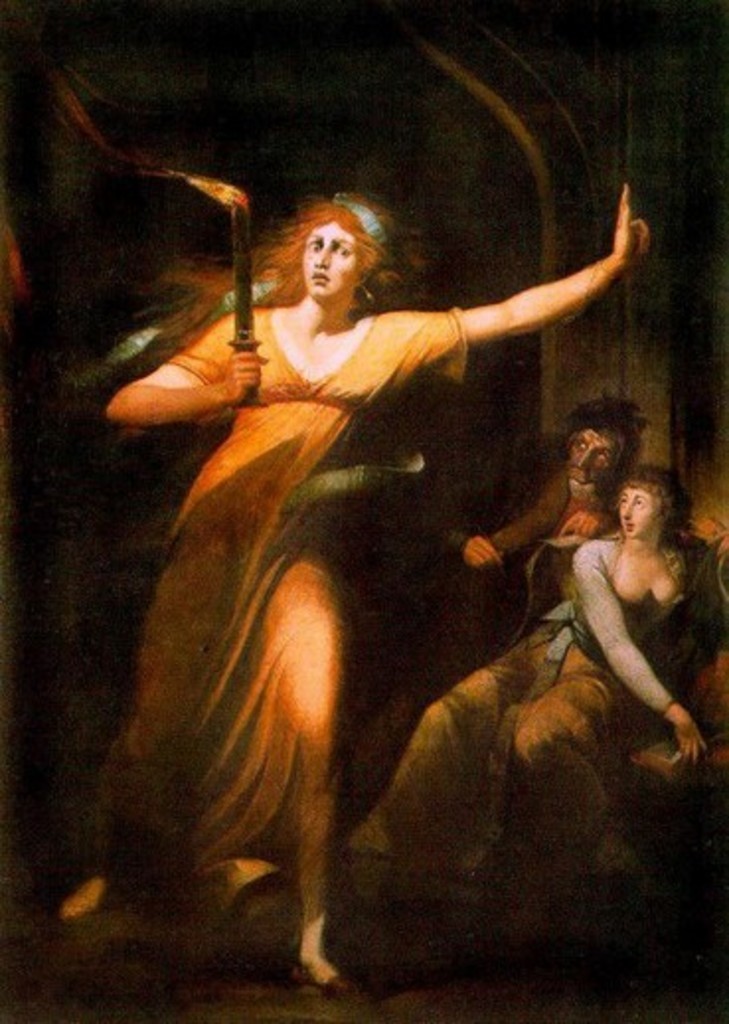
- Lady Macbeth walking in her sleep
Lady Macbeth walking in her sleep is a 1781 oil on canvas painting, kept in the Musée du Louvre, which represents a famous scene of Shakespeare’s play, Macbeth. This passage is scene 1 of act V, in which Lady Macbeth walks in her sleep, haunted by all the crimes her husband committed because of her. She looks very scared as she brandishes a torch which spreads a yellow light on her face, symbolising madness. The two characters in the background stand in contrast, as a symbol of normalcy.
Notes
[1] a male demon who lies upon women sleepers, in order to have sexual intercourse.
- Podcast et RSS
- Plan
- Mentions
- Rédaction
- Se connecter

-
2009-2025 © Lycée George-Sand La Châtre - Tous droits réservés
Ce site est géré sous SPIP 3.2.19 et utilise le squelette EVA-Web 4.2

Dernière mise à jour : lundi 24 janvier 2022



